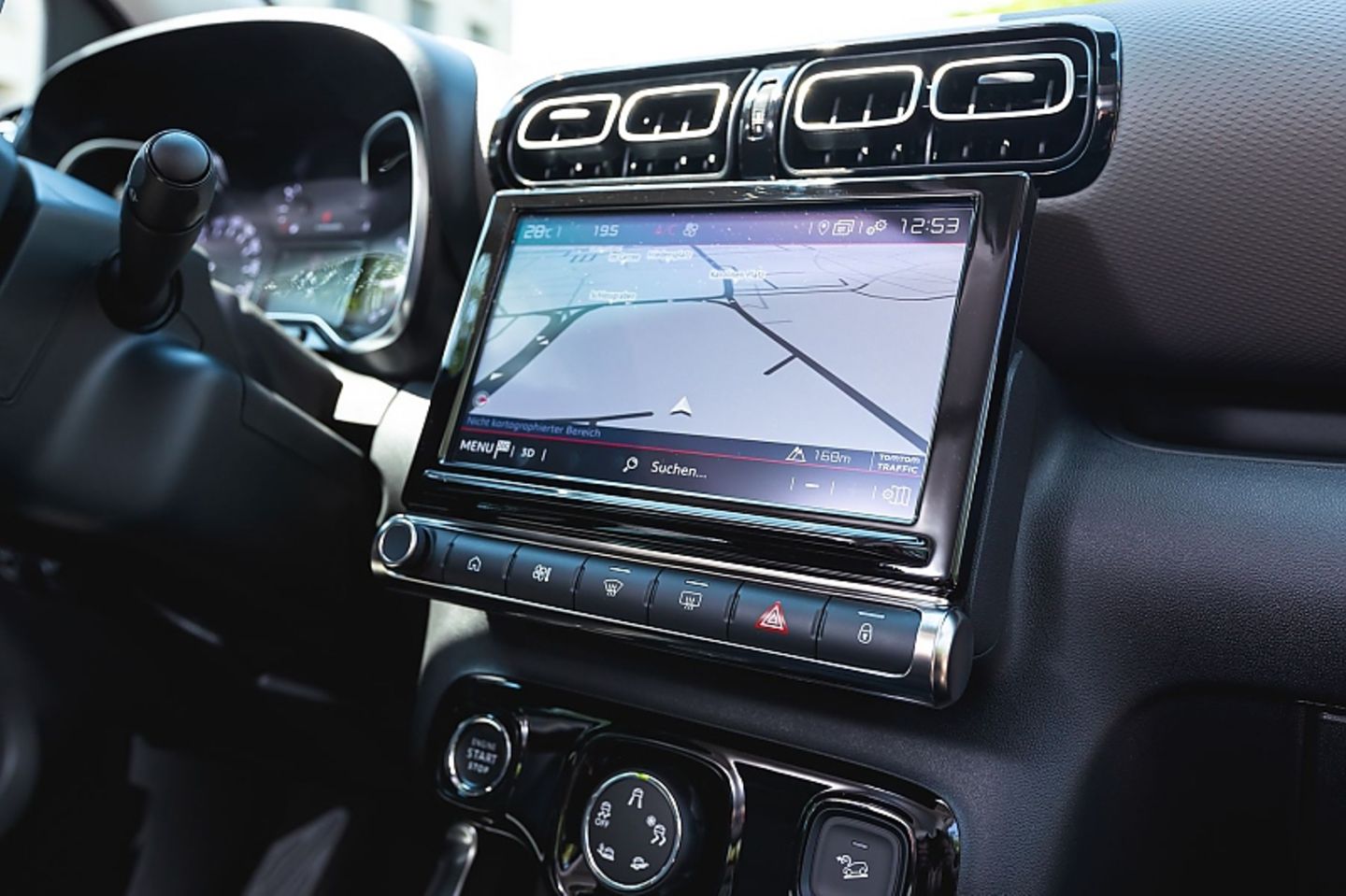Citroën has given the C3 Aircross a complete makeover of the body and interior. The freshening up is good for the little French, even if the engines remain unchanged.
The Citroën C3 Aircross is quite a success in Europe. Since its market launch in 2017, more than 300,000 drivers have chosen to sit behind the wheel of the small crossover. But the segment of small pseudo-Kraxler is fiercely competitive and competitors such as the technology-related Opel Crossland X, the VW T-Cross, the Kia Stonic, Audi Q2, Seat Arona, or Mazda CX-3 vie for the buyers’ favor. So the facelift is important in order not to fall behind.
It starts with the optics. The face of the small SUV has changed significantly and looks fresher. Instead of bulky headlight arrangements, the LEDs are now housed in narrow slots at the top and bottom. There is also an additional slot and more chrome look, which also emphasizes the indicated underbody protection. The sheet metal surgeons also applied the scalpel to the stern, but they didn’t cut as deep as the front. The modifications make sense. After all, fashion-conscious female drivers in particular should opt for the Citroën C3 Aircross. To make this easier, up to 70 exterior variants are now possible. There are also a few splashes of color on the mirror caps and the rear windows and, above all, two roof colors with black and white. Our test car rolls up in khaki and a white cap (costs 200 euros extra). Chic!
In order for the targeted clientele to decide in favor of the Gauls, a joyfully whistled “oh la la” is not enough, tangible arguments are required. This is also provided by the facelifted C3 Aircross in the interior, which has also been upgraded. The new, nine-inch central touchscreen immediately catches the eye. The graphics of the infotainment are not all the rage, but with a bit of getting used to, you can find your way around the settings. Especially since the smartphone can be integrated via Apple CarPlay and Android Auto. The couch-like, fabric-covered, thickly padded comfort seats not only exude a homely atmosphere, but are also comfortable. Even if we would like a slightly longer leg rest.
The steering wheel column is also too short, which makes it difficult to find a suitable sitting position. Nevertheless, we feel comfortable in the little Filou, which is also due to the bright interior. The many shelves in which you can store all sorts of odds and ends are also practical. The compartment under the center armrest, which is closed with a sliding element, is also accessible from the rear. There is an astonishingly large amount of space in the 4.16 meter long crossover, as you can move the rear bench seat lengthways by 15 centimeters. If this leeway is fully exploited, adults can also take a seat behind the rear seats. There we are already at the trunk volume, which is 410 liters, if you push the rear seat forward, it becomes 510 liters and if you fold the backrests, the capacity of the luggage compartment increases to a decent 1,289 liters. Especially since the loading area is level and loading is also quite easy thanks to a low edge. Nevertheless, you should be careful with smaller parts, as there is a gap of a good two centimeters between the trunk and the folded seats.
Everything stays the same under the bonnet. So even after the facelift, there are two diesels with 81 kW / 110 PS and 88 kW / 120 PS as well as two petrol engines with 81 kW / 110 PS or 96 kW / 131 PS to choose from. The transmission always has six gears to choose from, which can be changed automatically or manually. We opted for the top petrol engine and the automatic. As long as you swim relaxed in traffic, the Frenchman will do the job with ease. As soon as things get down to business faster, it becomes more strenuous. Then the three-cylinder growls sullenly and lets the occupants participate in its acoustic proof of work. However, the background noise is only partially associated with a corresponding propulsion. The standard sprint from zero to 100 km / h is completed in 10.3 seconds and the top speed is 195 km / h. The 1,280 kilogram Citroën C3 Aircross is satisfied with an average of five liters per 100 kilometers. The chassis is more on the stiff side for a crossover, but that’s not uncomfortable.
A small colored head-up display (plus 300 euros) with an extendable plastic pane and a few technical aids help when driving. Including an active emergency brake assistant and a 360-degree all-round view that uses the radar sensors. Which sometimes results in a slow image build-up. Our test car costs 27,440 euros with extras such as an induction charging surface for smartphones (150 euros) and the City Package 2 (490 euros, which also includes a blind spot assistant. It starts at 18,790 euros for the basic equipment “Live.” “which lacks air conditioning.
I am Pierce Boyd, a driven and ambitious professional working in the news industry. I have been writing for 24 Hours Worlds for over five years, specializing in sports section coverage. During my tenure at the publication, I have built an impressive portfolio of articles that has earned me a reputation as an experienced journalist and content creator.




